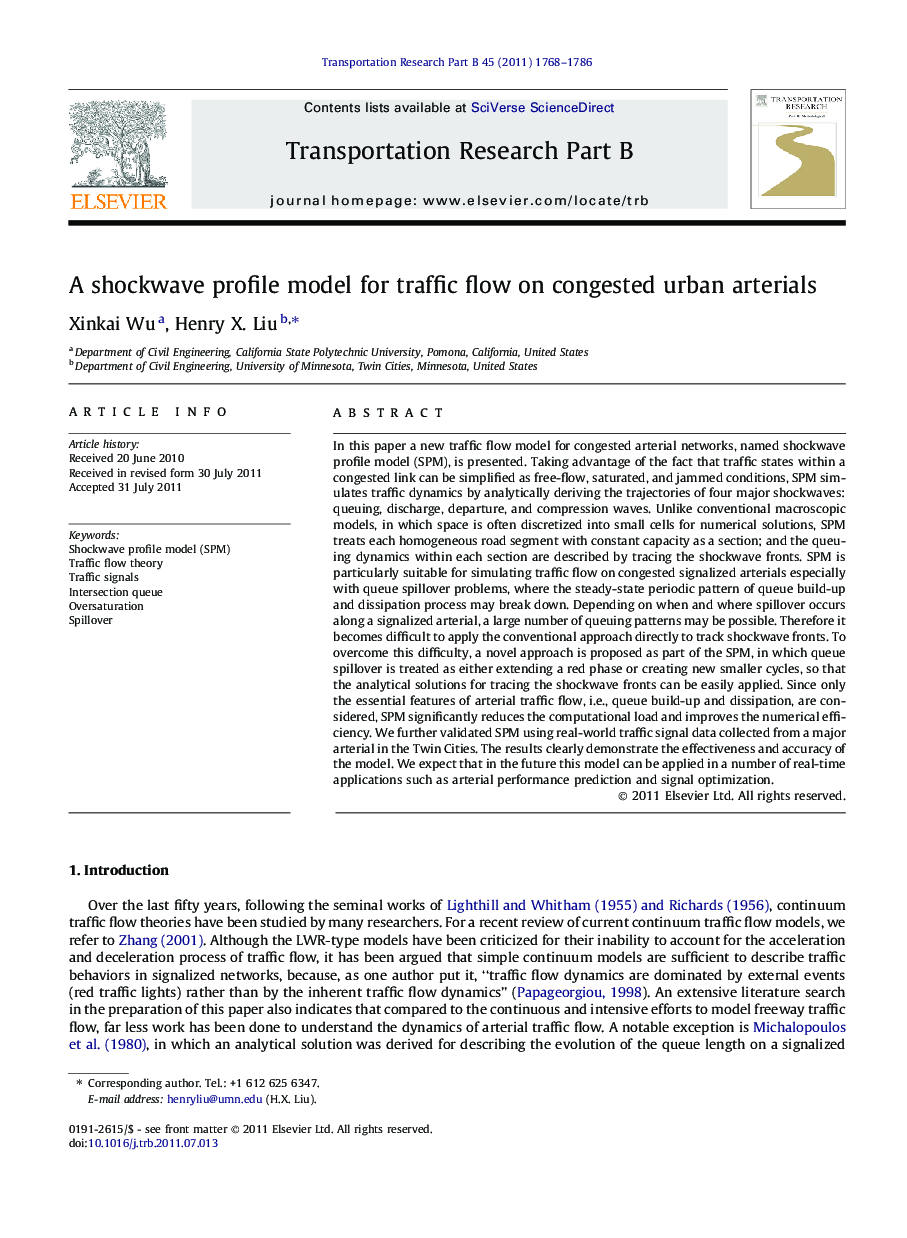| Article ID | Journal | Published Year | Pages | File Type |
|---|---|---|---|---|
| 1132318 | Transportation Research Part B: Methodological | 2011 | 19 Pages |
In this paper a new traffic flow model for congested arterial networks, named shockwave profile model (SPM), is presented. Taking advantage of the fact that traffic states within a congested link can be simplified as free-flow, saturated, and jammed conditions, SPM simulates traffic dynamics by analytically deriving the trajectories of four major shockwaves: queuing, discharge, departure, and compression waves. Unlike conventional macroscopic models, in which space is often discretized into small cells for numerical solutions, SPM treats each homogeneous road segment with constant capacity as a section; and the queuing dynamics within each section are described by tracing the shockwave fronts. SPM is particularly suitable for simulating traffic flow on congested signalized arterials especially with queue spillover problems, where the steady-state periodic pattern of queue build-up and dissipation process may break down. Depending on when and where spillover occurs along a signalized arterial, a large number of queuing patterns may be possible. Therefore it becomes difficult to apply the conventional approach directly to track shockwave fronts. To overcome this difficulty, a novel approach is proposed as part of the SPM, in which queue spillover is treated as either extending a red phase or creating new smaller cycles, so that the analytical solutions for tracing the shockwave fronts can be easily applied. Since only the essential features of arterial traffic flow, i.e., queue build-up and dissipation, are considered, SPM significantly reduces the computational load and improves the numerical efficiency. We further validated SPM using real-world traffic signal data collected from a major arterial in the Twin Cities. The results clearly demonstrate the effectiveness and accuracy of the model. We expect that in the future this model can be applied in a number of real-time applications such as arterial performance prediction and signal optimization.
► A new traffic flow model called shockwave profile model (SPM) is developed. ► The developed model is suitable for modeling traffic flow on congested arterials. ► The developed model is computationally efficient. ► The developed model is empirically validated using field data.
